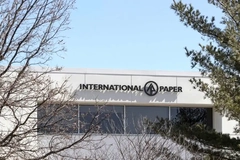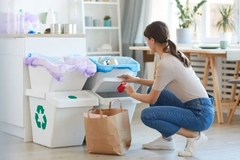US researchers uncover catalytic methods for vaporizing plastic waste

04 Sep 2024 --- Researchers have developed a new chemical process capable of vaporizing plastics and converting them into hydrocarbon building blocks for new materials. This catalytic process breaks down two of the most dominant types of post-consumer plastic waste — PE and PP — into monomers, offering a potential solution to packaging waste management.
The team of researchers from the US tested solid catalysts and discovered that sodium on alumina can effectively break down different kinds of polyolefin polymer chains, leaving one of the two pieces with a reactive carbon-carbon double bond at the end. Meanwhile, tungsten oxide on silica adds the carbon atom at the end of the chain to ethylene gas, which is constantly streamed through the reaction chamber to form a propylene molecule.
John Hartwig, professor of chemistry at the University of California Berkeley, tells Packaging Insights: “The sodium and tungsten catalysts do have some carbon footprint and environmental impact, but each of these is much much less than the carbon footprint and environmental impact of mining precious metals for the catalysts we used previously and which are used in many competing chemical recycling technologies.”
Previous methods for recycling these plastics relied on expensive and soluble catalysts. The new process, introduced in the research published in the journal Science, replaces these catalysts with more affordable solid catalysts commonly used in the chemical industry.
Based on input from Richard J. “RJ” Conk, the first author of this research, Hartwig explains that the process itself generates almost no GHG emissions, especially when compared to conventional methods for producing light olefins.
Improving conversion efficiency
According to the study, the process with the two catalysts together can achieve a conversion efficiency of nearly 90% for mixed PE and PP and higher yields when processing each plastic type separately.
This high efficiency is maintained even in the presence of some minor contaminants, although small amounts of PET and PVC can reduce the efficiency.
“The effect of contaminants like PET and PVC on reducing the efficiency of the current process, and really all chemical recycling technologies, is a major challenge to overcome. We are currently investigating new catalysts that are more robust to these sorts of impurities,” Hartwig shares.
 Plastic materials often end up in landfills, incinerated or scattered as microplastics in oceans and streams, with only a small fraction being recycled into low-value products.“At the same time, we are fortunate that polyolefins are some of the easiest and cheapest waste plastics to sort from these sorts of impurities due to their differences in chemical signatures that sorting systems use for identification and because of the difference in density.”
Plastic materials often end up in landfills, incinerated or scattered as microplastics in oceans and streams, with only a small fraction being recycled into low-value products.“At the same time, we are fortunate that polyolefins are some of the easiest and cheapest waste plastics to sort from these sorts of impurities due to their differences in chemical signatures that sorting systems use for identification and because of the difference in density.”
Advancing catalyst reusability
Hartwig highlights that the research team’s next steps are to modify or replace the sodium catalyst to ensure it can be reused many times over to limit the amount that must be sourced and disposed of.
“The best catalyst from the perspective of sustainability is one that can be used in small amounts and reused infinitely. We do not yet know the limit of the recyclability of our tungsten catalyst, but know that the sodium catalyst is very quickly deactivated in the reaction,” he explains.
Hartwig also emphasizes that while many researchers are focused on redesigning plastics to be more easily reusable, the challenge of managing difficult-to-recycle plastics will continue to persist.
“It is certainly a long way from this result to a chemical recycling facility, but we hope this result shows that one can deconstruct the carbon-carbon chains in polyolefins to form just one or two valuable products under mild conditions. I think this was inconceivable when the discussions and work on polymer deconstruction really began in earnest a little over five years ago.”
By Sichong Wang











